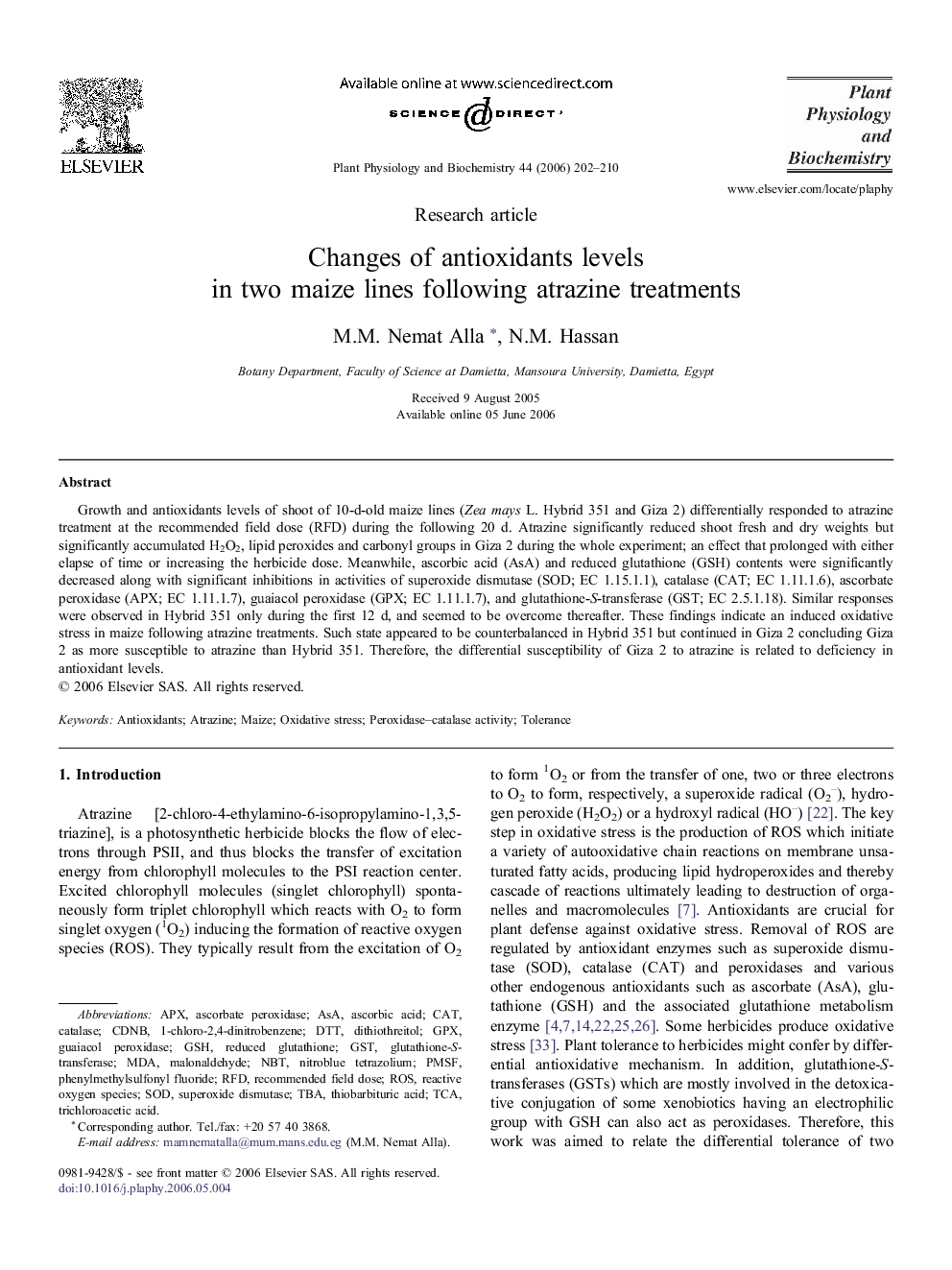| Article ID | Journal | Published Year | Pages | File Type |
|---|---|---|---|---|
| 2016872 | Plant Physiology and Biochemistry | 2006 | 9 Pages |
Growth and antioxidants levels of shoot of 10-d-old maize lines (Zea mays L. Hybrid 351 and Giza 2) differentially responded to atrazine treatment at the recommended field dose (RFD) during the following 20 d. Atrazine significantly reduced shoot fresh and dry weights but significantly accumulated H2O2, lipid peroxides and carbonyl groups in Giza 2 during the whole experiment; an effect that prolonged with either elapse of time or increasing the herbicide dose. Meanwhile, ascorbic acid (AsA) and reduced glutathione (GSH) contents were significantly decreased along with significant inhibitions in activities of superoxide dismutase (SOD; EC 1.15.1.1), catalase (CAT; EC 1.11.1.6), ascorbate peroxidase (APX; EC 1.11.1.7), guaiacol peroxidase (GPX; EC 1.11.1.7), and glutathione-S-transferase (GST; EC 2.5.1.18). Similar responses were observed in Hybrid 351 only during the first 12 d, and seemed to be overcome thereafter. These findings indicate an induced oxidative stress in maize following atrazine treatments. Such state appeared to be counterbalanced in Hybrid 351 but continued in Giza 2 concluding Giza 2 as more susceptible to atrazine than Hybrid 351. Therefore, the differential susceptibility of Giza 2 to atrazine is related to deficiency in antioxidant levels.
